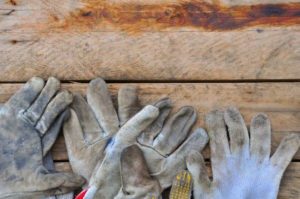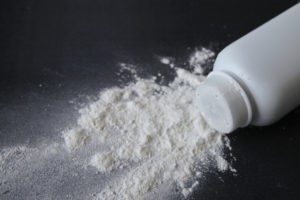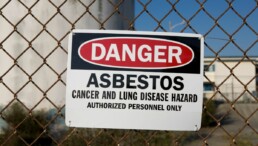Repealing The Massachusetts Statute of Repose
What Is It and Why Does it Matter to Victims of Mesothelioma?
What is a Statute of Repose?
Similar to a statute of limitations, a statute of repose imposes a time limit on when injured parties can file a lawsuit to try to recover compensation after they have been injured. Unlike a typical statute of limitations, however, the statute of repose applies to claims against people or companies involved in the design, planning, construction, or renovation of construction projects.
A statute of repose is intended to protect architects, engineers, and construction contractors from claims that arise due to mistakes or structural failures more than six years after construction work was completed. After six years, it is assumed that these parties no longer have control of the property, have no role in how it is maintained, and are not in a position to observe and fix any defects. The real-world effects of this legislation, however, are much more devastating.
The Fatal Flaw
The Massachusetts statute of repose includes not only a time limit on claims for construction-related issues, but also the manifestation of illnesses caused by the construction activity, including those that were not discovered until many years later. This is the statute’s fatal flaw. The current statute does not account for latent diseases (those with very long incubation periods before symptoms appear) that, by their very nature, won’t be discovered until long after the six-year repose period has expired.
In the case of disease caused by asbestos exposure, the latency period is 20-50 years after exposure occurred! Mesothelioma is a fatal cancer, the only known cause of which is asbestos exposure. This means that a person diagnosed with mesothelioma today has to look back at least 20 years to determine the cause of his or her disease, well past the six-year time limit of the statute of repose.
The Massachusetts statute of repose was enacted in 1968 before the devastating effects of asbestos exposure were understood. Keeping the 1968 legislation in place today fails to consider what we’ve learned in the intervening years. It essentially gives companies blanket immunity for past—and current—misdeeds related to asbestos use and provides no recourse to victims of asbestos exposure.
It’s time that changed.
A Devastating Legacy of Greed and Disease
The health hazards of asbestos have been known by asbestos manufacturers since the 1930s, but were covered up to continue profiting from its sale. It wasn’t until the 1960s that information about the dangers of asbestos began to spread. When OSHA was formed in 1970, the first emergency standard it passed was a ban on the use of asbestos insulation.
But even as the dangers of asbestos were brought to the public’s attention throughout the 1970s and 80s, companies still used asbestos-containing products without warning workers or taking precautions to prevent workers from breathing in the deadly asbestos dust.
The legacy of asbestos use is an ugly story of corporate greed, negligent decision-making, and callous disregard for the health and safety of working men and women and their families. These families all have one thing in common: they were exposed to asbestos decades ago and are just now being diagnosed with disease, including mesothelioma and lung cancer.
They include men and women that worked in the paper mills in Lee, the shipyards in Quincy, Boston, and Charlestown, mills in Lowell and the Blackstone Valley, factories in Fall River, and commercial office towers in downtown Springfield, Worcester, and Boston. Asbestos was also used in powerhouses, factories, shipyards, commercial office buildings, schools, churches, apartment buildings, and homes.
Asbestos-related diseases kill thousands of people every year, including present and former residents of the Commonwealth of Massachusetts. Victims suffering today want justice for their injuries, and so do we.
Victims Can Not Get Justice
For an asbestos personal injury case, the statute of limitations begins when a person is diagnosed with a disease. But, the statute of repose sets a deadline based solely on the passage of time since a construction project was completed, irrespective of whether a person has been diagnosed with a disease or injury by that time.
The statute of repose is inherently unfair to victims of latent diseases caused by exposure to toxic substances during a construction project. By the time these victims develop an injury that gives them a right to pursue a lawsuit for damages, they are already barred from pursuing it in the courts.
Asbestos exposure is like a stick of dynamite with a long fuse. For workers helping to construct a building, the fuse is lit when dust from asbestos products is breathed in during construction. The fuse burns for decades, only to explode into mesothelioma, lung cancer, or asbestosis during their retirement years.
Responsible Parties Can Not Be Held Accountable
Companies that sell or install asbestos in a building are well aware that any harm caused will not become apparent for 20-50 years. Under the current wording of the statute of repose, the contractors and designers of the building cannot be held responsible, even if they knowingly exposed the workers to asbestos.
Today, instead of protecting an architect for a stairway or railing that collapses ten years after a building is turned over to its owner as was initially intended, the statute of repose is being used by large contractors to avoid liability for knowingly injuring workers.
It also means that a school or apartment building being built right now could be using asbestos or other toxic materials, and the contractor would never be held liable for any injuries caused by those toxins.
We Don’t Think That’s Fair
In 2019, Shepard O’Donnell appeared before the Massachusetts Supreme Judicial Court on behalf of mesothelioma victim Wayne Oliver’s widow, June Stearns, in Stearns v. Metropolitan Life Ins. Co. Mr. Oliver worked on the construction site for the Pilgrim Nuclear Power Station in Plymouth, MA, where he was exposed to asbestos-containing products in the 1970s. He was not diagnosed with mesothelioma until 2015.
June Stearns, testified: “Unfortunately, it’s kind of ironic: we would watch the ads on TV (mesothelioma lawsuits) and think how sad that these poor people have this awful disease, not knowing it was laying dormant in Wayne’s body probably right then and had lain there, dormant, for many many years without any kind of symptoms. Then, all of a sudden, he was diagnosed with mesothelioma.”
“He was a healthy man, fit as fiddle, and young and vibrant. We worked together for many years and we were enjoying our life together until that awful disease reared its ugly head,” she went on. “He was in such pain and in a wheelchair and on oxygen – just not living the life he wanted to live, so he finally gave up. It was 16 months after diagnosis, and then he died July 25, 2016.”
The court denied Mr. Oliver’s family compensation citing the statute of repose, which effectively barred him and his family from bringing suit against the parties responsible for his injuries. We don’t think that’s fair.
The Court Agrees
Fortunately, the Supreme Judicial Court of Massachusetts agrees, recognizing the inherent unfairness of the current statute of repose. The court recognized the “regrettable” effects of the current statute of repose, and wrote that the appropriate recourse to change the law is not in the courts, but in the legislature. It further encouraged the legislature to look to the example of other states that have exempted asbestos-related illnesses from their own statutes of repose. Some have done away with the construction statute of repose altogether, while others have carved out exceptions for latent diseases to protect victim’s rights.
House Bill 1746 is currently before the Massachusetts legislature and would change the Massachusetts Statute of Repose, exempting latent diseases such as those caused by exposure to asbestos.
The Way Forward
Shepard O’Donnell is proud to be at the forefront of this push to change the law in Massachusetts. On behalf of the Massachusetts men and women that we represent, who are suffering and dying from asbestos-related diseases, we are actively urging the Legislature to follow the suggestion of the Supreme Judicial Court and support House Bill 1746, to protect the rights of victims of exposure to toxic substances, including asbestos. This Bill would not only protect workers’ rights but also serves as a deterrent to companies that might otherwise use dangerous toxic products in the construction of buildings in the Commonwealth.
If you or someone you know has been exposed to asbestos or has been diagnosed with mesothelioma, lung cancer, or asbestosis, we want to help. Contact us here or call us anytime at 617-451-9191.
Watch a segment of Attorney Michael Shepard testifying in front of the Massachusetts State Legislature about the Statute of Repose.
Erika O'Donnell Featured in Super Lawyers Article
Erika O’Donnell was recently quoted in Super Lawyers’ article discussing the actions you must take, and when, if you or a loved one fall ill from asbestos.
By Super Lawyers staff on January 25, 2021
YOU HAVE 3 YEARS TO FILE A MESOTHELIOMA LAWSUIT IN MASSACHUSETTS
The actions you must take, and when, if you or a loved one fall ill from asbestos
COVID-19 Countermeasures: Liability Immunity Under The PREP Act
Written by: Giuliana D’Esopo
On March 17, 2020, the U.S. Department of Health and Human Services (“HHS”) published an administrative Declaration providing broad legal immunity for manufacturers, suppliers, and administrators of certain countermeasures used against COVID-191. Negligence cases regarding covered countermeasures will be barred, limiting an injured party’s possible redress to the Countermeasures Injury Compensation Program (“CICP”).
The authority to issue such declaration arises out of the Public Readiness and Emergency Preparedness Act (the “PREP Act”).2 Congress enacted the PREP Act in 2005 as a response to fears about an avian influenza (H5N1) pandemic.3 Through the issuance of such PREP Act declaration, the Secretary makes a determination that a disease, condition, or other threat to health constitutes a public health emergency and specifies, among others, the category of diseases, health conditions, or threats to health for which the Secretary recommends the administration or use of the covered countermeasure, and the period during which the liability protections are in effect.4
The PREP Act defines “covered countermeasure” by outlining three categories.5 The first consists of “qualified pandemic or epidemic products” and includes products (drugs, biological products, and devices) manufactured, used, designed, developed, modified, licensed, or procured to diagnose, mitigate, prevent, treat, or cure a pandemic or epidemic or to limit the harm such pandemic or epidemic might otherwise cause.6 The second category describes “security countermeasures,” and the final category consists of products subject to emergency use authorizations.7 The PREP Act’s liability protections are extremely broad, essentially covering most manufacture, testing, development, distribution, dispensing, administration, or use of designated covered countermeasures absent willful misconduct.
The PREP Act authorizes the Secretary to establish a program to provide compensation to individuals who have suffered serious physical injuries or death as the direct result of the administration or use of a covered countermeasure, called the Countermeasures Injury Compensation Program (“CICP”).8 Eligible requesters include injured countermeasure recipients, survivors of deceased injured countermeasure recipients who died as a direct result of the administration or use of a covered countermeasure, and executors or administrators on behalf of the estates of deceased injured countermeasure recipients (regardless of their cause of death).9 Requesters will need to prove causation pursuant to CICP’s standard: proof that is based on “compelling, reliable, valid, medical, and scientific evidence.”10 A temporal association between receipt of the countermeasure and onset of the injury is insufficient.
Requesters who successfully demonstrate causation can recover reimbursement for reasonable and necessary medical services and items to diagnose or treat a covered injury or its health complications; lost wages; and death benefit for certain survivors.11 Benefits under CICP will only be paid after the requester has in good faith attempted to obtain available coverage from all third-party payers with an obligation to pay for or provide such benefits, and the requester must provide the information of such payers.12 If a request is denied, the requester can motion the Secretary of HHS to review the determination, but there is a broad statutory prohibition against any further review.13
It is too early to predict the effectiveness of CICP as a route toward remedy for parties injured by covered countermeasures of COVID-19, but compared to traditional tort procedure, it is seemingly unfriendly to requesters. The lack of judicial oversight is cause for concern, with no further appeals available beyond internal review. While traditional tort procedure allows an injured party his day in court, decisions under the CICP are made on an administrative basis. The process for attorneys evaluating a potential case will be to determine the presence of a covered countermeasure and whether the individual or entity that administered it is shielded from tort liability under the Declaration, and to meet the Declaration’s standard for showing causation.
There is a clear need for the development and distribution of life-saving measures to combat the COVID-19 pandemic, and the Declaration helps encourage such innovation. In the pursuit of this goal, is important to consider potential risks and employ reasonable care in the production of such countermeasures.
- Declaration Under the Public Readiness and Emergency Preparedness Act for Medical Countermeasures Against COVID-19, 85 Fed. Reg. 15198 (Mar. 17, 2020).
- 42 U.S.C. § 247d-6d.
- See Pandemic Planning Update II, Department of Health and Human Services (Nov. 13 2006), available at cdc.gov/flu/pandemic-resources/pdf/panflureport3.pdf.
- See 42 U.S.C. § 247d-6d.
- See 42 U.S.C. § 247d-6d(i)(1).
- Id.
- Id.
- 42 C.F.R. § 110 (Countermeasures Injury Compensation Program).
- Id.
- See 42 C.F.R. § 110.20(c) (outlining CICP’s causation requirement).
- See 42 C.F.R. § 110.2 (summarizing available benefits).
- See id.
- See 42 C.F.R. § 110.91 (2018).
Raw Asbestos Imports Quadrupled from January–April 2018 Compared to 2017
Written by: Shepard Law Firm Staff
Washington, DC—The Asbestos Disease Awareness Organization (ADAO), an independent nonprofit dedicated to preventing asbestos exposure, released new research confirming the increase in raw asbestos imports.
The report detailed that according to the U.S. International Trade Commission, from January to April 2018, the chemical industry brought in nearly 260 tons of asbestos from Russia and Brazil. This represents an increase of nearly 400% of the January–April 2017 imports of 67 tons. The president’s administration and the Environmental Protection Agency, who have close ties to the chemical industry, have defended the ongoing imports and use of this deadly substance.
Asbestos is a known carcinogen and there is no safe or controlled use of asbestos. According to the new “Global Asbestos Disaster” paper, asbestos-related diseases account for nearly 40,000 American deaths each year. This year alone, asbestos has been found in children’s makeup, in schools in Pennsylvania, and in a prison hospital in Georgia.
We believe that asbestos use should be eliminated to protect the public and this trend of increasing the importation of asbestos may possibly expose more individuals to health risks. If you or a close family member have developed mesothelioma or other asbestos-related illnesses, please do not hesitate to contact us for a free consultation.
Celebrating National Men’s Health Week
Written by: Erika O’Donnell
This week (June 13 – June 19) was National Men’s Health Week. While mesothelioma affects both women and men, it is a topic that should certainly be a part of any discussion regarding men’s health. Men who have served onboard Naval ships or who have worked in industries that utilized raw asbestos and/or asbestos-containing products such as insulation, gaskets, packing and board, are at risk for contracting an asbestos-related disease.
Diseases Caused by Asbestos Exposure:
Mesothelioma:
- Mesothelioma is a rare form of cancer, typically caused by asbestos exposure. The most common type of mesothelioma is pleural mesothelioma. The pleura is a thin membrane that surrounds the lungs and acts as a lubricant between the lungs and the chest cavity. Pleural mesothelioma is just that—a mesothelial tumor that occurs on and about the pleura. Since this is the most common form of mesothelioma, it is often referred to as a lung cancer. However, other forms of mesothelioma occur in the peritoneum (the membrane that surrounds the organs of the abdomen), stomach, and other organs of the abdomen. Mesotheliomas can be benign, but are most often malignant.
- There is a long latency period between the time that a person is exposed to asbestos and the time that mesothelioma appears—from 20 to over 50 years.
Symptoms include fatigue, cough, muscle weakness, shortness of breath, chest pain, weight loss, fever and night sweats.
Lung Cancer:
- Exposure to asbestos can also cause other forms of lung cancer. In order to determine whether a lung cancer was caused, at least in part, by exposure to asbestos, physicians typically look to see if there are any pleural markings called “plaques” on the lungs. These plural plaques are typically caused by asbestos fibers infiltrating the pleura.
- Symptoms may include cough, shortness of breath, chest pain, hoarseness, weight loss or loss of appetite.
Asbestosis or Asbestos Lung Disease:
- Asbestosis and Asbestos Lung Disease are non-malignant asbestos-related diseases. A series of medical tests that include a Chest CT Scan and a Pulmonary Function Test are used to diagnosis Asbestosis. Both Asbestosis and Asbestos Lung Disease vary in severity. A mild case of asbestosis may have little to no impact on your life at all while a more advanced case of asbestosis may require a person to use oxygen.

What You Should Be Doing If You Have Been Exposed to Asbestos in the Past:
Talk to Your Doctor:
- Tell your doctor that you may have been exposed to asbestos and approximately when the exposure occurred so that your doctor may make an informed decision on whether you should be monitored for potential asbestos-related diseases.
Yearly Physicals:
- It is important for a person who had past asbestos exposure to report any and all symptoms such as chest pain and shortness of breath to their medical care professional. You should also attend your yearly physicals and get yearly chest scans if so prescribed by your doctor.
Quit Smoking:
- While mesothelioma is not caused by smoking cigarettes, it has been shown that people who have had asbestos exposures and smoke are at a greater risk to contract the disease.
During Men’s Health Week and every other week, we at Shepard Law are committed to educating our clients, neighbors, friends, and the general public about the hazards associated with asbestos and with health topics in general. Please check out some of our previous blog articles that may be helpful to you, your brothers, fathers and sons:
http://www.shepardlawblog.com/2016/04/national-healthy-school-day-are-our-school-buildings-healthy/
http://www.shepardlawblog.com/category/lung-cancer-risks/
http://www.shepardlawblog.com/2015/11/5-nutritional-tips-to-help-chemotherapy-patients-stay-on-track/
http://www.shepardlawblog.com/2016/04/how-workers-brought-the-dangers-of-asbestos-home-to-their-families/
And to all the dads out there, have a Happy Father’s Day.
Truth vs. Hope: What to Tell Asbestos Victims
Written by: Michael Shepard
As someone who has represented victims of mesothelioma, lung cancer, and asbestosis over the past two decades, I have witnessed hundreds of clients succumb to terrible diseases. Often times, when meeting a new client, usually in their home, I am asked questions about the disease they have been diagnosed with. Most people pay no attention to the word mesothelioma, but when a doctor tells you that you have it, you want to learn everything you can about it. Given my experience with mesothelioma victims, my clients naturally want to know how their situation compares to others with that disease. The answer is not an easy one.
When someone is diagnosed with mesothelioma, one of their first questions inevitably involves whether they can be cured. The next question is usually how long they have to live. Mesothelioma is a terminal disease, meaning that there is no known cure and the cancer will likely progress to the point where it eventually takes your life. Between those dates is a span of time that every patient wants to know, but no one can accurately predict. While the average survival of someone diagnosed with mesothelioma is six to eighteen months, it can vary greatly depending on multiple factors. Despite looking for a pattern over the years, I still have no idea how long a mesothelioma victim might survive. I have seen clients who have died within three weeks, and clients who have lived more than five years. Age doesn’t seem to be a determining factor, although younger, otherwise healthy mesothelioma clients have as good a chance as anyone. Even so, I have seen victims as young as twenty-one years old succumb to this terrible cancer within a year from diagnosis. I have also seen victims ninety years and older live for three years.
Despite all the advances in medicine and chemotherapy in the past twenty years, science doesn’t seem to be any closer to determining why certain people get mesothelioma and others don’t, much less finding a cure for this disease. It is well established, and beyond debate by anyone other than a lawyer or expert representing asbestos defendants or interests, that mesothelioma is caused by exposure to all forms of asbestos, including chrysotile asbestos. What we don’t know is why two people, working side-by-side around asbestos for twenty years or more, can have such different reactions to asbestos exposure, where one develops mesothelioma while the other does not. When it comes to mesothelioma, there are more questions than there are answers.

This uncertainty is why it is so difficult to talk to new clients about their future. The client is desperate for information, for optimism, for hope. Depending on the bedside manner of the doctors involved, the client may not have been given any answers to those questions. Early in my career, I was frustrated that my clients were not given information about their survival prospects. I went so far as to seek out the advice of cancer doctors, including one who was also an ordained minister. What I came to learn is that doctors have to tread the same delicate path that I had been navigating. On the one hand, doctors feel they owe the patient the courtesy of explaining the disease and its prognosis in plain, frank terms so the patient and his family aren’t misled into thinking that things were going to work out fine in the end. On the other hand, the mind has tremendous control over the body’s ability to fight off disease. If you take away a person’s hope, their will to fight, you all but guarantee that they will not survive long. So how then, do you handle those questions?
I have chosen a middle ground. I ask my clients what their doctors have told them. I ask a lot of questions about their doctor’s visits, their discussions with the doctors, their discussions with their spouse and family members. Based on the answers I hear, I am usually able to determine how much information has been given to them. If they are well informed, and seem to be able to discuss their prognosis candidly, I am more open in the information I provide. If, however, it seems that they either haven’t been given very clear information, or that they aren’t accepting of the information they have been given, I am much more guarded with my comments. I don’t want to take away whatever optimism or hope is helping my client handle the awful struggle with cancer. Regardless of how much information I share, I always offer an empathetic ear and a solemn promise to do what I can to help. Most often, I find that my clients are happy to know that someone is looking out for their needs, and for the financial needs of their spouse moving forward. Ultimately, it is all I can do for them, and I take that responsibility very seriously.
I don’t know if my approach is right or wrong, but I suspect that it depends on the situation and it depends on the person. When faced with the sudden and unexpected diagnosis of mesothelioma, would you want the truth, or would you prefer hope?
Case Spotlight: The Auto Mechanic’s Wife
Written by: Shepard Law Firm Staff
When someone is diagnosed with an asbestos-related disease such as mesothelioma or lung cancer, they are often asked where and how they were exposed to asbestos. For people who did not work in asbestos-related industries or trades, it can be difficult to determine how they were exposed. This is often the case with women who have been diagnosed with an asbestos-related disease and were either housewives or worked in fields that did not have obvious exposures to asbestos-containing products.
When determining where a person (who had little or no direct exposure to asbestos) may have encountered asbestos fibers, attorneys often look to family members who lived with the individual for significant periods of time. Husbands and fathers of the sick individual often worked in trades that involved frequent contact with asbestos-containing products. Asbestos fibers from these products were then brought home on clothing and into the family home and car. Anyone washing the work clothing of individuals who frequently worked with asbestos-containing products was at an increased risk of developing an asbestos-related disease.
Our firm recently represented the family of a woman who never worked directly with any asbestos-containing products, and did not work in any commercial or industrial locations where asbestos products were present. In trying to determine how she may have been exposed, the occupations of her family members were explored. Her husband had worked for a number of years as a truck driver and mechanic and was responsible for performing brake and clutch jobs on the trucks he drove. She was responsible for washing the clothes he wore to work every day, clothes that transported asbestos fibers home and into her lungs.
Brake linings, clutch facings, and a variety of gaskets on automobiles contained asbestos until very recently. Brake linings were one of the last products to have asbestos removed from them, and asbestos-containing brake linings were sold as recently as 2001. When old brake linings and clutch facings were removed and replaced, the brake or clutch was often cleaned out with an air hose or cloth rag. The cleaning created a significant amount of dust, which the worker would breathe in and collect in his hair and on his clothing.

Many people want to ask the obvious question: how is it that the wife or other family member of the worker became sick and not the worker himself? The answer is that not everyone who is exposed to asbestos will develop an asbestos-related disease. Some people work directly with asbestos products every day for years and never get sick, while others develop mesothelioma with only limited exposure to asbestos. Additionally, the latency period for developing asbestos-related disease ranges from approximately 20 to 50 years. This means that most people who develop asbestos-related diseases don’t show any symptoms until decades after they were exposed.
If you or someone you know has an asbestos-related disease and did not work in industries that used asbestos containing products, it’s important to find a firm with extensive experience in investigating such scenarios. Shepard Law has extensive experience reviewing and gathering evidence to help determine the source of asbestos exposure for victims such as these. This experience is crucial because proper documentation and investigation strengthens a client’s case in the legal system. As always, if you suffer from an asbestos-related disease and believe that you have a case, contact us for a confidential consultation.
Asbestos Exposure Spotlight: Power Plants
Written by: Michael McCann
While power plants are vital to the operation of many facilities, schools, and campuses throughout New England, they were also a major source of asbestos exposure to power plant workers through the 1980’s. At a typical multi-building facility, the power plant was the building that generated steam to heat the other buildings in the facility. This was a common design for manufacturing facilities and college campuses that were made up of multiple buildings. Back in the 20th century, most of these power plants utilized dozens upon dozens of asbestos-containing products. What types of asbestos-containing products were used in these power plants?
First, the biggest piece of equipment in these power plants were the boilers that generated the steam for the rest of the facility. Large, steam-generating boilers utilized many different asbestos-containing components, including insulation, refractory material, and gaskets. Insulation and refractory material needed to be replaced periodically throughout the lifetime of the boiler. Repairing these materials could expose the power plant worker to hazardous asbestos dust.
The gaskets on these large boilers were found in various places. The biggest gasket went around the boiler door. This gasket had to be removed and replaced each time the boiler door was opened. Gaskets were also used around the other manways and handholes on the boiler. Manways were other openings on the boiler that would allow a person to enter the boiler to inspect or repair it. Each time these manways were opened, the gasket needed to be replaced. Handholes were smaller openings on the boiler that allowed for inspection of internal components of the boiler, by sticking in a hand or your head to view the inside of the boiler. These handhole gaskets also had to be replaced each time the handhole was opened. The removing and replacing of these gaskets would create hazardous airborne asbestos dust.

Boilers were certainly not the only products that exposed power plant workers to asbestos. These power plants needed many more pieces of equipment to operate efficiently. This equipment included pumps, valves, steam traps, heat exchangers, and various others types of products. Most of these pieces of equipment used asbestos-containing gaskets and packing material through the 1980s. These pieces of equipment needed to be maintained on a regular basis, and replacing the gaskets and packing on these pieces of equipment would create hazardous airborne asbestos dust.
While a lot of the power plants in Massachusetts that operated during the 20th century are no longer in operation, many are still active today. Our office has handled cases arising from asbestos exposure at a number of power plants in the area, some of those include:
- Phillips Andover Academy: Andover, MA
- Pilgrim Nuclear Power Station: Plymouth, MA
- Bird & Son: E. Walpole, MA
- Dennison Manufacturing: Framingham, MA
- Harvard University: Cambridge, MA
- MIT: Cambridge, MA
- Boston Edison: L Street Station, Edgar Station, and Mystic Station
- Northeastern University: Boston, MA
- Holy Cross University: Worcester, MA
- Boston College: Chestnut Hill, MA
- Brooks School: North Andover, MA
- Groton School: Groton, MA
If you or a loved one has been diagnosed with an asbestos-related illness like mesothelioma or lung cancer, and would like to know more about your rights, please call us for a free, confidential consultation at (617) 451-9191.
How Workers Brought the Dangers of Asbestos Home to Their Families
Written by: Shepard Law Firm Staff
Most people would be surprised to know that there are a significant number of people who have developed asbestos-related illnesses without working with or around asbestos or asbestos-containing products. Most of these cases involve the spouse or family member of someone who worked with asbestos-containing products. But how did these household members, who never personally worked with asbestos-containing products, get exposed to asbestos dust?
The danger of asbestos arises when asbestos fibers are released into the air and are then breathed into the human body. This typically occurs when asbestos-containing products are repaired and replaced. For instance, when an old asbestos-containing gasket is scraped from a pipe flange, that scraping process releases asbestos-containing dust into the air. In most asbestos cases, the injured person is the worker, who breathes in this dust while personally doing the work.
Unfortunately, that is not the only risk created by asbestos-containing products. The dust from an asbestos-containing product can also get on the clothing of the person doing the work, as well as on the clothing of any individual who is working in the near vicinity. This dust can stay on the worker’s clothing for long periods of time, and when the worker wears his or her dirty work clothing home, the dust can come along for the ride.

Anyone who has done laundry before understands the typical process for washing dirty and dusty clothing. Instead of placing these dirty and dusty clothes directly in the washing machine, most people shake out these clothes in order to get all the dust off of them. Shaking out dirty work clothing creates dust that gets breathed in by the person doing the shaking, as well as by those who are in the area helping out with the laundry. And if the person who wore those dirty clothes worked with or around asbestos-containing products, the dust on those clothes could contain asbestos. We have seen many mesothelioma cases where the injured person’s only exposure to asbestos came from laundering dirty work clothing. This type of exposure to asbestos is called “take home” exposure and doing laundry is one of the more common sources. From an emotional standpoint, these cases are very disheartening, and usually come as a complete shock to families.
These cases also differ from the typical asbestos cases in how the evidence of exposure is put together. The most important part of an asbestos case is product identification. The Plaintiff or injured person has to prove they were exposed to asbestos from certain products. Typically, it is the injured person who will identify from which products he or she was exposed to asbestos. However, in “take home” exposure cases, the injured person is someone who didn’t work with asbestos products, and is unlikely to know which products they might have been exposed to. Therefore, in “take home” exposure cases, the more knowledgeable witness, with regard to product identification, is usually the spouse or household member who actually worked with the asbestos products and brought asbestos dust home on their work clothing. The spouse or household member can testify about the work he or she did with asbestos or asbestos-containing products and the condition of their work clothing when it was worn home. This evidence, combined with testimony that the injured person laundered the dirty work clothing, is sufficient to satisfy the requirements of product identification.
Unfortunately, these types of cases have become much more common in recent years. Our firm has handled many of these cases, and has the knowledge and experience needed to succeed in this complex area of litigation.
If you or a loved one has been diagnosed with an asbestos-related illness like mesothelioma or lung cancer, and would like to know more about your rights, please call us for a free, confidential consultation at (617) 451-9191.
Close to home: How Asbestos Hides in Unlikely Places and Products
Written by: Shepard Law Firm Staff
When most people think of asbestos, they picture a dark and dusty industrial building, a power plant with insulated steam pipes, or an old, noisy boiler in a basement of a run-down school. Because of these pre-disposed beliefs about what asbestos is and where it is found, the average person that did not work in an industrial trade is likely to think they have never come into contact with asbestos.

Few people realize that asbestos can hide in other places and products besides factories.
But asbestos can be found in unlikely places and products. For instance, most people are unaware that everyday beauty products such as baby powder and talcum powder were at times contaminated with deadly asbestos fibers. A number of lawsuits have been brought by individuals who used the Cashmere Bouquet brand scented talcum powder for a number of years, and later developed mesothelioma or other asbestos-related diseases. How can talcum powder contain asbestos? The connection between talc and asbestos is due to the close proximity of the two minerals in many areas of the earth’s surface. Tremolite, which is a type of asbestos fiber, is frequently found in the same areas where other minerals are mined, particularly vermiculite and talc. Mines that produced talc have often been found to also have tremolite asbestos fibers in the area from which the talc was being mined. In addition to causing asbestos-related diseases such as mesothelioma and lung cancer, there is also evidence that regular use of cosmetic talc may cause ovarian cancer in women.
Additionally, anyone who was involved with a home renovation project in the 1970’s or earlier likely worked with some type of asbestos containing product. Many building products in the late 1970’s and early 1980’s such as roofing shingles, floor tile, and joint compound contained asbestos fibers. Roofing shingles and floor tile would often have to be cut to size, which created dangerous asbestos dust. If you performed any home renovation work involving drywall or sheetrock during this time period, it is likely that joint compound was applied between sections of the new walls. And because most joint compound contained asbestos fibers until approximately 1980, when the joints between the walls were sanded, asbestos dust would be created.
As you can see, even if you never worked in an industrial trade or at a commercial facility, you may have been exposed to asbestos through a variety of different products, including products that are in our homes. And because many people forget how small asbestos fibers are, they underestimate the dangers of exposure. Check out the size comparison at this site to see just how small asbestos fibers are. And if you or a loved one has been diagnosed with an asbestos related disease, please contact one of our attorneys.
















